Kajabi vs. WordPress: The Clear & Simple Guide for 2024
If you want to launch a website, you have a hard choice ahead of you. You'll need to decide what platform or software you'll use to create, grow, and monetize your site. More specifically, you may find yourself choosing between Kajabi vs. WordPress: two of the most comprehensive tools for building a website.
Although they're both popular, Kajabi vs. WordPress offer drastically different experiences. With Kajabi, you get a platform that includes almost every feature you need to grow your site and start making money from it. WordPress is more flexible, but it also requires a lot more customization than Kajabi. Understanding these differences is key to making the right choice for your needs.
In this article, we'll compare Kajabi vs. WordPress. We'll talk about what makes each option unique, and explore their key features, pricing, pros and cons, plus everything else you'll need to know. Let's get to it!
What Are Kajabi and WordPress?
Kajabi is an all-in-one hosted platform that includes tools to help you build a website, create and publish courses, set up memberships, start an email marketing campaign, process payments, and build communities.
In other words, Kajabi offers pretty much every tool you need to create a website that you can monetize:

There are other platforms that can do these things. What sets Kajabi apart is that all of these features are part of the core platform, and you don't need to use third-party tools to integrate them.
With Kajabi, you pay a single fee that includes hosting and all of the features we just mentioned. The catch is that some of the specifics can vary depending on which plan you sign up for, and Kajabi is not cheap.
WordPress takes a different approach to website building. That's because it's a Content Management System (CMS) that was originally developed for blogging, but has grown into a multi-layered system.
You can download and install WordPress with any web host you want. The CMS is incredibly flexible, which means you can use it to create whatever type of website you desire:
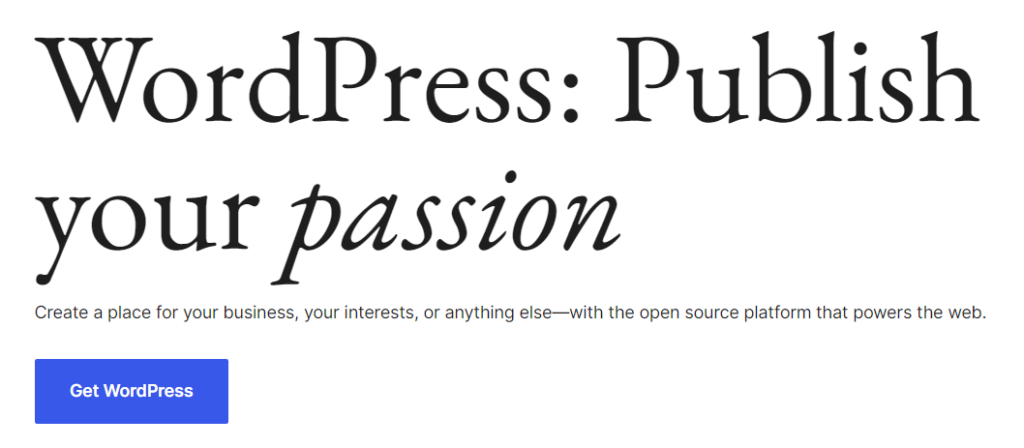
Unlike Kajabi, WordPress doesn't claim to be an all-in-one platform. However, anything you can do with Kajabi you can also do with WordPress. That includes setting up membership websites.
The main difference is that you'll need to set up integrations and plugins to get all of those extra features. That means extra work, but there are few (if any) limitations to what you can do with WordPress. You're sacrificing ease of startup in exchange for more flexibility over the site you build.
The Key Differences Between Kajabi vs. WordPress
To better understand how each platform works, let's go over their main differences:
- Open vs closed-source software. Kajabi is closed-source software. That means you can pay for access to the platform, but you can't modify its code or do anything outside of the boundaries it sets up for you. WordPress, on the other hand, is open source. You can modify every aspect of the CMS in any way you see fit.
- Web hosting. With Kajabi, hosting is part of the package. Your website exists on the platform's servers, and migrating it can be a challenge. With WordPress, you can use any web host you want, and migrate from one platform to another if needed.
- Customization. Kajabi offers a broad range of customization options, but they're all built into the platform. With WordPress, you can change the CMS in any way you want, and you get access to a large library of user-created templates and plugins.
- Monetization. Kajabi is designed to enable you to create and monetize a website, and it offers multiple ways to do that. WordPress doesn't include built-in monetization options, but you can add them to the CMS using integrations and plugins.
- Support. Since Kajabi is a hosted platform, you get access to direct support channels. With WordPress, you'll need to go to your web hosting provider for support, or talk directly to plugin and theme developers.
Finally, let's touch on price. You can use WordPress on a budget. The core platform is free, and you can find hosting for less than $5 per month. Many quality plugins and themes are free as well, and premium options typically cost $50 to $100 per year.
The same can't be said about Kajabi. The basic Kajabi plan starts at $149 per month, so you'll need a decent budget from the start. We'll talk more about pricing later in this article.
Kajabi vs. WordPress
In the following sections, we'll do a head to head comparison – Kajabi vs. WordPress. We'll dig into the details of what makes Kajabi and WordPress unique. We'll review the pros and cons of each platform, and cover everything from building a website to SEO and pricing.
The Pros & Cons of Kajabi
Here are the main pros and cons of using Kajabi.
Pros of Kajabi:
- It's very user-friendly.
- You get access to all the features you need to create, market, and monetize a website, without third-party integrations needed.
- It supports specific use cases such as online academies, podcast sites, blogs, community and membership sites, and more.
- It's an all-in-one solution, so you don't need to worry about web hosting.
- It offers built-in payment functionality.
Essentially, Kajabi offers a simple one-stop-shop for creating and managing many types of websites.
Cons of Kajabi:
- All of that functionality doesn't come cheap, as Kajabi is an expensive platform.
- Each plan limits the number of products you can publish. That applies to ecommerce products and other elements such as courses. This can make it difficult to run a business using Kajabi, as it only offers three plans.
If you're using Kajabi to run an ecommerce site with a sizable product catalog, you'll be forced to pay for the most expensive plan. The Pro plan supports up to 100 products, which can still fall short, particularly for ecommerce sites.
The Pros & Cons of WordPress
In terms of what it can do, WordPress can certainly match Kajabi (or even exceed it). However, the CMS offers an entirely different user experience. Here's how that creates unique advantages and disadvantages.
Pros of WordPress:
- It's an open-source platform, which means you can do anything you want with it.
- You have thousands of plugins at your disposal, so you can add almost any feature imaginable to your site.
- It's the most-used CMS in the world, which means most popular services integrate with it.
- You can choose from thousands of themes to customize your site's design.
- You can host your website anywhere you want.
As you can see, the main selling point of the CMS is that the possibilities are endless. In this sense, you're very much able to choose your own adventure.
Cons of WordPress:
- Its out-of-the-box features are very limited when compared to Kajabi. You'll need to find the right plugins and integrations to match Kajabi's potential and create a comprehensive solution.
- If you want to create a complex website, the setup process may take a while.
Ultimately, with WordPress, you get an unmatched degree of customization options for building a website. However, it comes at the cost of having to learn the ins and outs of the CMS and find the right set of tools.
Kajabi vs. WordPress: Building Your Website
As we've mentioned, building websites with Kajabi vs. WordPress offers a very different experience. At their core, both options rely on drag-and-drop website builders and templates (or themes in the case of WordPress) but they each take a unique approach. Let's dive a little deeper into the process for both.
Building Your Website with Kajabi
After you sign up for Kajabi, it does a lot of hand-holding during the entire process of starting a website. First, the platform asks you what kind of site you need help building:

It may ask further questions as well. For example, if you're building a coaching site, Kajabi asks if you plan to coach students one on one, in groups, and how many sessions you expect to provide:

Once you've established your site's settings, you can begin to configure it. The Kajabi dashboard is easy to navigate, and includes all the options you'll need to use the platform effectively.
If you navigate to the Website tab, Kajabi will ask you to choose a starter template. This will be your site's basic design, which you can customize afterward:
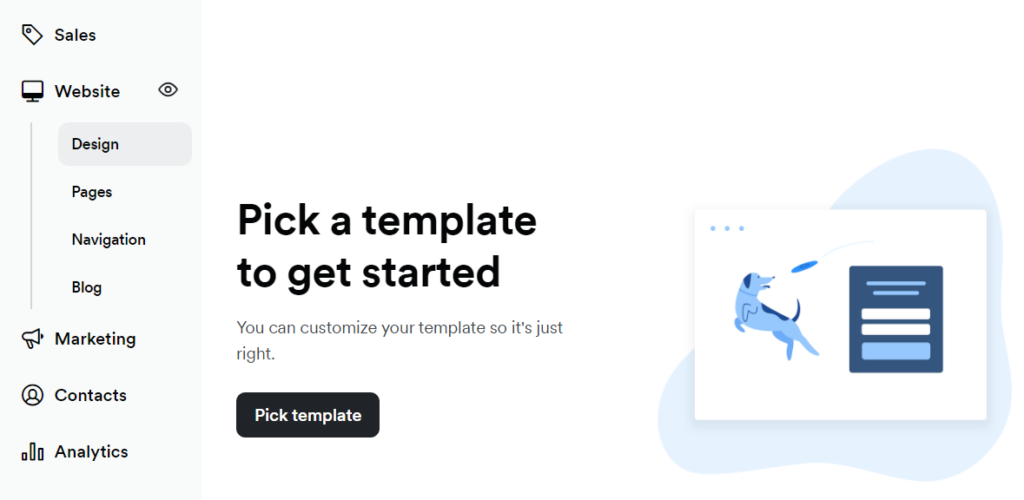
Kajabi offers a different selection of templates depending on what type of website you're building. All the templates feature modern designs, but the number of options is somewhat underwhelming:

Once you select a template, you can customize it:

This happens through a visual editor, with pre-designed modules that you can add to the page, re-arrange, and customize.
Building Your Website with WordPress
When it comes to building a website with WordPress, you don't get as much guidance. After you set up your WordPress installation, you'll get access to the dashboard. From there, you can choose to set up a new theme or get to work on the website right away.
Selecting a WordPress theme (the equivalent of a Kajabi template) means choosing between free and premium options. If you navigate to the available themes in the dashboard you'll see the free choices:

Regardless of what theme you choose, WordPress enables you to create new pages and posts using its Block Editor. The editor offers pre-built elements that you can place on a page, customize, and re-arrange:
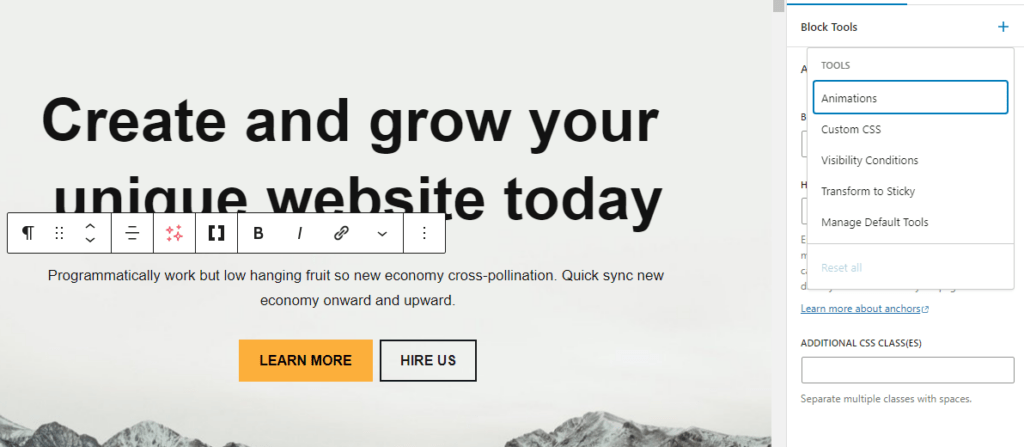
Overall, WordPress gives you a lot more customization options for building a website. You get access to literally thousands of themes (free and premium), and you can change any aspect of their designs.
It's also worth noting that while WordPress doesn't offer setup instructions, many plugins do. For instance, our WooCommerce's setup wizard helps you set up an ecommerce site step-by-step.
Kajabi vs. WordPress: Search Engine Optimization
Kajabi gives you access to a basic set of Search Engine Optimization (SEO) features. That includes the option to set titles, meta descriptions, and tags for each post or page:

From a technical perspective, this is all you need for SEO. How a page ranks doesn't necessarily depend on the platform's SEO settings, but on factors such as proper keyword optimization and competition.
WordPress doesn't include SEO tools out of the box. However, a lot of websites rely on free SEO plugins like Yoast SEO.
These tools provide basic SEO functionality, such as enabling you to set your post titles and meta descriptions for search engines. They often take things a step further and enable you to configure how your content appears on social media:
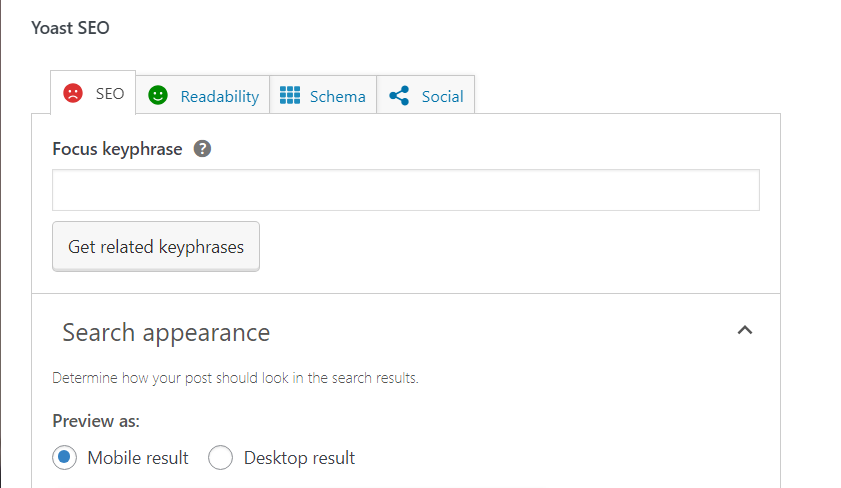
Likewise, most WordPress SEO plugins also provide direct recommendations on SEO best practices. They typically do this by providing “scores” for each page or post, which show you how well you're following basic on-page optimization practices:
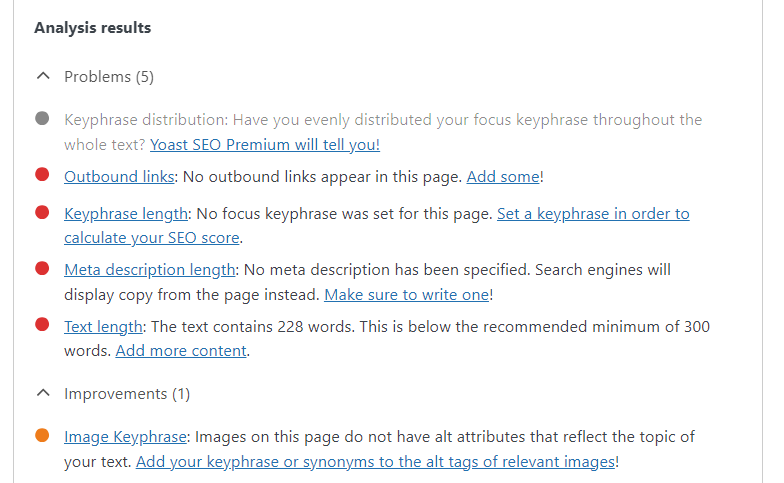
This approach can be incredibly helpful if you're not familiar with the basics of SEO. High scores on SEO plugins don't necessarily translate to better rankings, but they do provide useful guidance.
Kajabi vs. WordPress: Creating Courses and LMS Sites
One standout feature Kajabi offers is built-in Learning Management System (LMS) support. That means you can use Kajabi to create online courses. You're also able to market and sell them, all without the need for third-party integrations.
Once you have access to the Kajabi dashboard, you get the option to add new courses. The platform will ask you for basic course details such as names and descriptions, and it also offers built-in AI tools to help you generate outlines:
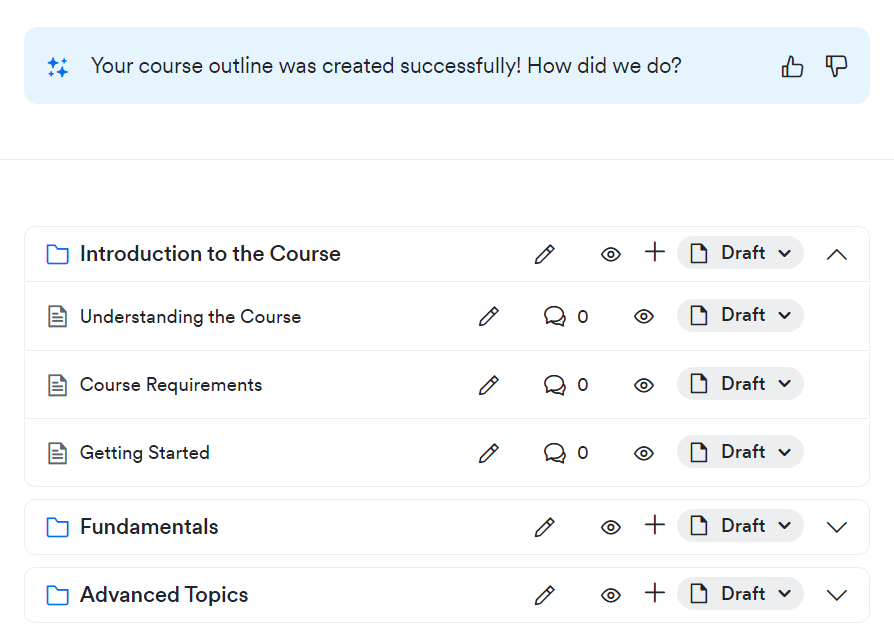
Customizing courses in Kajabi is very different from creating pages. Instead of the platform's page builder, you'll use a basic editor that enables you to add text, video, and audio files as part of each course:
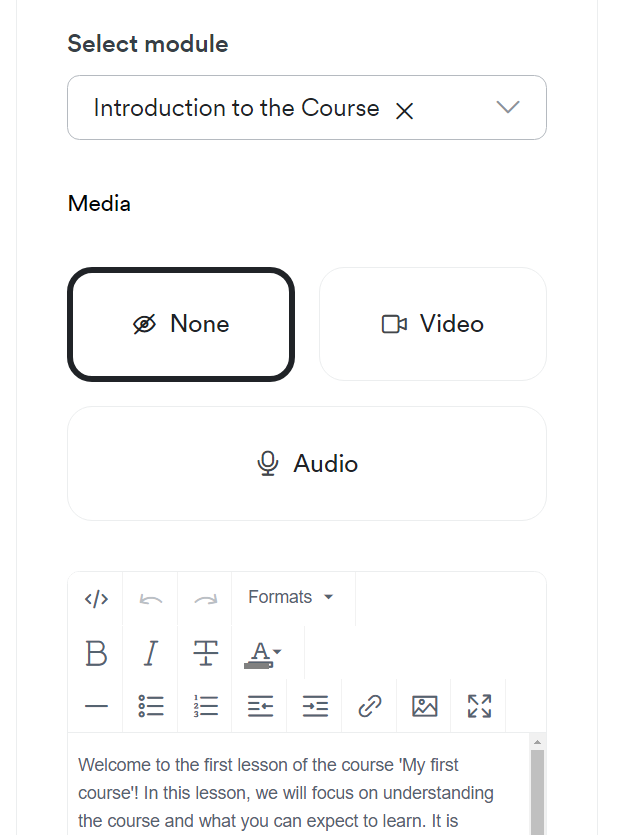
The platform makes up for the lack of a more advanced course builder by offering a lot of extra features, such as automations. With Kajabi, you can easily set up automated functionality, such as giving users access to the second course in a series when they finish the first one.
Meanwhile, WordPress doesn't offer LMS functionality out-of-the-box. If you want to create online courses, you'll need to use a plugin such as Courses for MemberMouse to add those features to the CMS.
This can make the initial course setup a little more time-consuming. However, since you're free to select any LMS plugin you want, you have a lot more freedom over how your online academy operates.
It's also worth noting that Kajabi limits the number of products you can publish depending on your plan, and that applies to courses. The basic Kajabi plan only supports up to three products or courses, whereas WordPress LMS plugins typically don't have any such limitations.
Kajabi vs. WordPress: Pricing Comparison
Comparing Kajabi vs. WordPress in terms of pricing is somewhat complicated. At first glance, Kajabi is clearly the more expensive platform, with plans starting at $149 per month:

That's to host a single website. With that plan, you get access to most of the features we've discussed, plus up to 1,000 active customers.
More expensive Kajabi plans come with more features and support for extra products. You also get support for affiliate marketing, automations, and the option to remove the Kajabi branding.
If you don't want to show the Kajabi branding on your site, you'll need to pay at least $199 per month. That makes Kajabi a very expensive option when compared to other similar platforms. Still, it's worth noting that you'll save 20 percent when you pay annually.
Things are different with WordPress because you're not tied to a single platform. You can host your site anywhere, and some providers cost as little as $5 or less per month.
Aside from hosting, you may want to pay for certain premium plugins and themes. These are typically affordable as well:
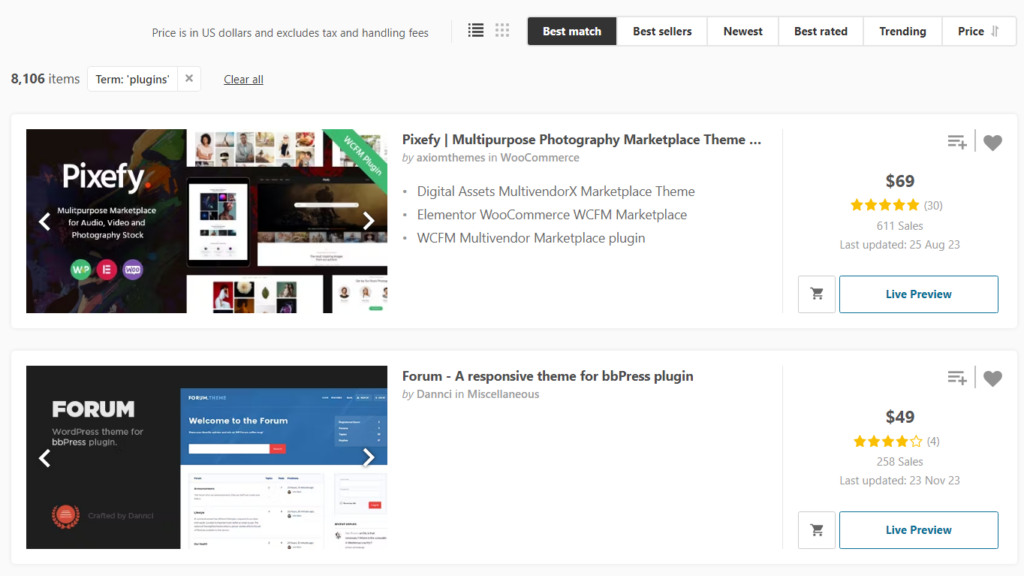
Unless you need a lot of premium features or very robust hosting, using WordPress will almost always be the cheaper option. You can set up a WordPress website that offers all the same features as any Kajabi plan for a fraction of the price.
It's important to understand that being cheaper doesn't automatically make WordPress the best option. The CMS is an amazing choice if you like having full control over your website and you want to customize every aspect of it.
If you'd rather use a platform that takes care of most maintenance tasks and doesn't require work to add new features, you might be not mind Kajabi's associated price tag. The extra cost can be worth the work it takes off your plate, particularly if you're building a simple website.
Kajabi vs. WordPress: Integrations
Kajabi and WordPress are in completely different leagues when it comes to integrations. With Kajabi, you're using a platform that's designed to include practically all the features you might need to build a website and monetize it.
That means there's less of a need for integrations. In total, Kajabi offers “over 15 integrations“, focusing on popular services such as Google Tag Manager, Stripe, and PayPal:

Most integrations offer functionality that Kajabi already features in-house. These mostly exist in case you prefer to use an external service to handle a specific part of your website's experience.
WordPress, on the other hand, integrates with just about every popular third-party service that offers functionality geared towards websites. That's because WordPress is by far the most popular CMS in the world, so it's well supported.
If you look at the WordPress plugins repository, you'll find thousands of options. Most popular third-party services have integration plugins available. For example, here's what you see if you look for Stripe plugins:

That's just a small selection out of the available options. If you're looking for the platform that gives you the most integration choices, WordPress is the clear winner.
Kajabi vs. WordPress: Collecting Payments
Collecting payments using Kajabi is incredibly simple, as the functionality is built into the platform. You can use Kajabi Payments on your site to collect payments from credit cards, Afterpay, Google Pay, and Apple Pay:
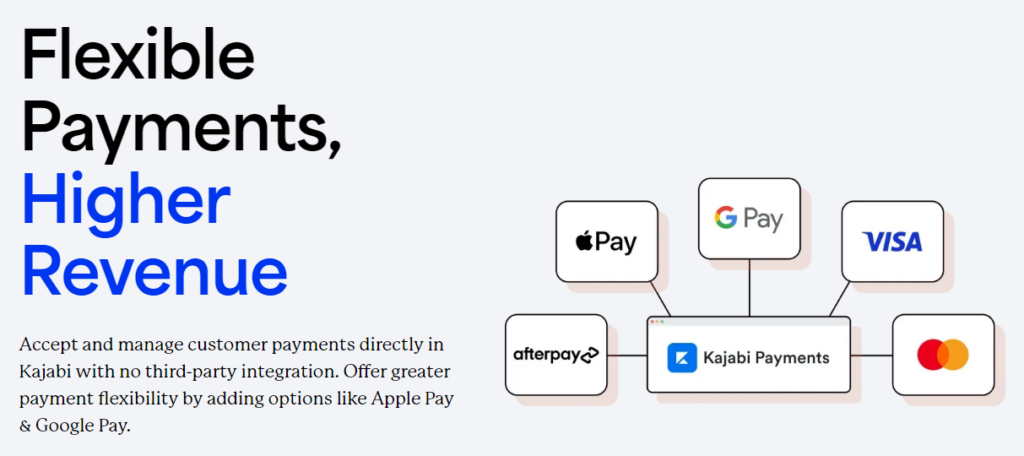
This functionality is built into Kajabi and is available with every plan. Moreover, Kajabi offers a 0 percent transaction fee, which is rare for payment solution providers.
With Kajabi, you're able to keep track of transactions, generate receipts, manage refunds and subscriptions, and process payouts when you need. The service also offers dispute management services, which can be a lifesaver for businesses that traditionally deal with a lot of chargebacks.
WordPress, on the other hand, doesn't offer built-in payment functionality. To add this, you'll need to use either a third-party payment processor or a plugin that supports payments.
You can use dozens of plugins to add payment functionality to WordPress. Some of them, including MemberMouse and WooCommerce, offer payment functionality on top of other features, such as membership management.
Overall, your experience processing payments with WordPress will vary drastically depending on the third-party processor or plugin you decide to use. You get a lot more options than with Kajabi, but the setup process can be more complex.
If you're looking for the platform that offers the most straightforward solution for processing payments, Kajabi comes out ahead.
Kajabi vs. WordPress: Which Is Better for Your Business?
So far, this Kajabi vs. WordPress comparison has covered every aspect you need to know to make an informed decision about these two platforms. To help you choose, let's sum up which option is best for what use cases:
- Kajabi. Using Kajabi makes sense if you want an all-in-one platform with a focus on monetization. This is very much a service geared toward helping you set up an online business. However, it's not the best option for ecommerce if you plan to sell a large catalog of products.
- WordPress. This is by far the more versatile option of the two. You can use WordPress to set up any kind of website or online business you want. The CMS requires more effort to set up and customize, but in the long run, it can be a lot cheaper and more scalable than using Kajabi.
Keep in mind that we don't recommend using Kajabi for ecommerce websites with large product catalogs, because it caps the number of products you can publish at 100. That can be enough for a small online store, but if you need to publish more products, WordPress with MemberMouse is the better choice.
Overall, Kajabi is a solid option if you want a platform that already includes all of the features you need to create, grow, market, and monetize a website. You'll pay a premium for that, but if it's within your budget, you likely won't be disappointed.
WordPress is the more customizable option. This is the CMS you want if you need full control over your business and its website. You can customize every aspect of your site, and add almost any feature and integration you can imagine, all of it at a lower cost than using Kajabi (but with more work involved).
How to Build Your Business with WordPress and MemberMouse
If you're leaning toward using Kajabi for its LMS and membership features, you might want to consider using WordPress instead. With the right plugin, WordPress can offer an experience that surpasses the Kajabi LMS and membership functionality.
If your main goal is setting up either a membership or an online course website (or both), we recommend using MemberMouse:

This plugin enables you to transform WordPress into a membership platform. You can use it to set up free and paid membership tiers, process payments, create recurring subscriptions, protect content, and more.
You can also extend the plugin using Courses for MemberMouse. This add-on enables you to create profitable online courses using a drag-and-drop builder. Classes can span multiple modules, you get to offer quizzes, students are able to track their process, and you can even provide certifications.
If you want to read more about how MemberMouse works, check out our video guides on how to set up MemberMouse and get your membership website up and running.
Conclusion
Kajabi vs. WordPress offer incredibly different experiences. With Kajabi, you get a full suite of tools to set up and grow a website. That includes LMS functionality, payment processing, and even podcasting tools. Every Kajabi plan includes all of these features, but they vary in terms of how many customers and products you can market.
With WordPress, there are no restrictions. You can set up your online business in any way you want, but you'll need to find the right tools for the job. MemberMouse, for example, can help you transform your WordPress site into a membership and online learning business.
Do you have any questions about our Kajabi vs. WordPress comparison? Let's talk about them in the comments section below!
If you liked this article, be sure to follow us on Facebook, Twitter, Pinterest, and LinkedIn! And don't forget to subscribe in the box below.
Amy Harper
Hi! I'm Amy. I'm obsessed with the three W's: Writing, WordPress, and Walking! When I'm not blogging about the WordPress ecosystem, you can find me hitting the trails of the Pacific Northwest with a cup of coffee and my camera.
 Blog
Blog Podcast
Podcast Support
Support Customer Login
Customer Login








